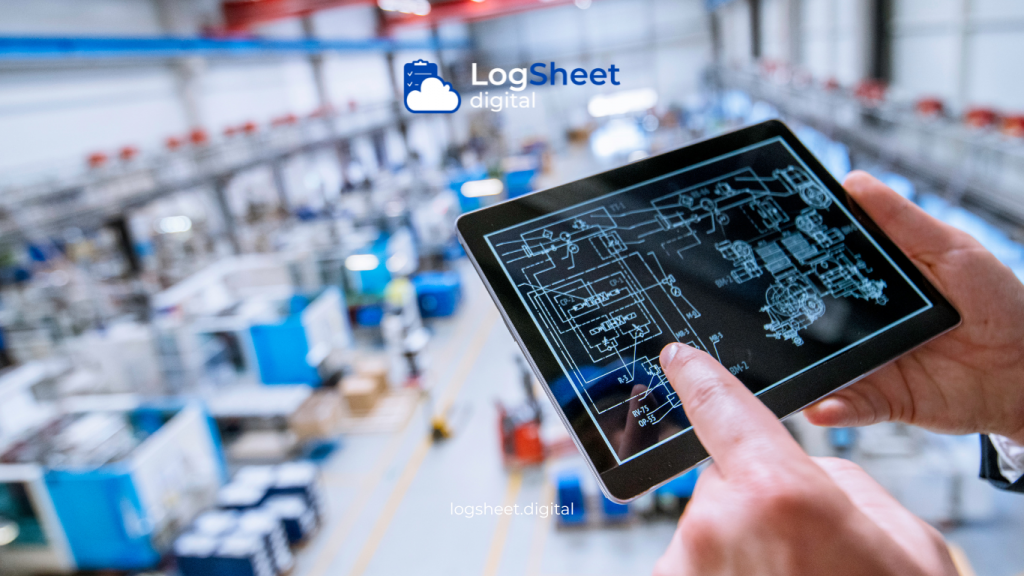In today’s digital era, technological innovation has penetrated various industrial sectors, including monitoring and maintenance. One of the leading innovations is the use of digital logsheets. Digital record-keeping offers a more efficient and accurate solution compared to traditional paper-based methods. This article will thoroughly discuss digital record-keeping, from definitions, benefits, challenges, to implementation strategies.
What is a Digital Logsheet?

Read more: Digital Logsheet: The Latest Solution for Quality Monitoring and Analysis
A digital logsheet is a software-based system used to record, monitor, and manage maintenance data electronically. This system is designed to replace the manual records traditionally kept on paper, providing real-time access and better integration between departments. Digital record-keeping not only logs maintenance data but can also be integrated with other systems such as ERP (Enterprise Resource Planning) and CMMS (Computerized Maintenance Management Systems).
Benefits of Digital Logsheets in Industry

Read more: Digital Transformation in Maintenance Management: The Role of Digital Logsheets
1. Higher Operational Efficiency
Digital record-keeping allows for automatic recording of maintenance data, reducing human errors that often occur with manual record-keeping. With data recorded automatically and in real-time, the maintenance team can respond more quickly, reducing machine downtime and increasing overall productivity.
2. Faster and Easier Data Access
One of the main advantages of digital record-keeping is the ability to access data from various devices and locations. This enables the maintenance team to monitor equipment status anytime and anywhere. Additionally, managers can easily access reports and data analysis for faster and more accurate decision-making.
3. Better Data Accuracy
Manual record-keeping is often prone to errors, whether due to illegible handwriting or data entry mistakes. Digital logsheets eliminate these issues with automatic recording, ensuring that the data logged is accurate and consistent.
4. Advanced Analysis and Planning
With digital logsheets, companies can conduct more in-depth data analysis. Available analytics features enable trend identification, equipment failure analysis, and better maintenance planning. With this information, companies can develop more effective and efficient maintenance strategies, reducing operational costs.
5. Cost and Waste Reduction
Investing in digital logsheets can reduce the need for paper and other administrative materials, as well as reduce the time spent on manual record-keeping. Additionally, with improved efficiency and accuracy, companies can lower maintenance and operational costs.
Challenges of Implementing Digital Logsheets

Read more: Improving Maintenance Efficiency with Digital Logsheets in Industry
1. Initial Implementation Costs
One of the main challenges in adopting digital logsheets is the initial implementation cost. Purchasing software, hardware, and training staff require significant investment. However, the long-term benefits from increased efficiency and cost savings often outweigh the initial costs.
2. Organizational Culture Change
Adopting digital systems often requires a change in organizational culture. Employees accustomed to manual methods may feel reluctant or anxious about this change. Therefore, companies need to provide adequate training and support to ensure a smooth transition.
3. Integration with Existing Systems
Integrating digital record-keeping with existing maintenance or other systems can be challenging. The integration process must be carefully carried out to ensure data can flow smoothly between systems without losing information or disrupting operations.
4. Data Security
Data security is a critical issue in digital systems. Sensitive maintenance data must be protected from unauthorized access and cyber threats. The implementation of digital logsheets should include steps to ensure data is protected with encryption and appropriate access controls.
Successful Digital Logsheet Implementation Strategies

Read more: Optimal Quality: Digital Logsheets & Raw Materials
1. Needs Assessment
The first step in implementing digital record-keeping is conducting a needs assessment. Identify maintenance processes that need improvement and determine how digital record-keeping can meet those needs. Define goals and success metrics to help in selecting the most suitable system.
2. Choosing the Right System
Select a digital logsheet software that fits the size and needs of the company. Consider features such as ease of use, integration capabilities, and technical support. Choose a solution that can be customized to existing processes and has the potential to scale as the company grows.
3. Training and Support
Provide comprehensive training to employees on how to use the digital logsheet system. Ensure staff understand how to log data, generate reports, and utilize available features. Ongoing support is also important to help employees address any issues or questions that may arise.
4. Data Migration
Migrating data from old systems to digital logsheets must be done carefully to ensure all important information is accurately transferred. Verify data accuracy after migration and ensure the new system functions as intended.
5. Monitoring and Evaluation
After implementation, conduct regular monitoring to evaluate the performance of the digital logsheet system. Review performance metrics and identify areas that need improvement. Continuous adjustments will help ensure the system remains effective and meets the company’s needs.
Case Study: Digital Logsheet Implementation in a Manufacturing Company

Read more: Increasing Asset Management Efficiency with Digital Logsheets
Background
XYZ Company is a manufacturer of electronic components facing challenges in managing their equipment maintenance. The manual maintenance process using paper caused delays in reporting and recording errors. The company decided to implement digital record-keeping to improve operational efficiency and reduce machine downtime.
Implemented Solution
XYZ Company adopted a digital logsheet system that allows for automatic data logging and real-time access. The system integrated with existing hardware and software, including the ERP system. Employee training was conducted to ensure a smooth transition to the new system.
Results
- Increased Efficiency: The time required for logging and reporting reduced by up to 60%. The maintenance team could handle more tasks within the same timeframe.
- Higher Data Accuracy: Recording errors significantly decreased, improving data quality and report accuracy.
- Reduced Downtime: Better data analysis enabled the company to identify and address issues before causing downtime.
- Cost Savings: Reduced need for paper and manual administration resulted in significant cost savings.
Conclusion

Read more: Smart Solutions: Digital Logsheets for Operational Health
Digital logsheets are an innovation that brings many benefits to industrial monitoring and maintenance. By increasing operational efficiency, improving data accuracy, and providing real-time access, digital record-keeping helps companies optimize maintenance processes and reduce operational costs. Although there are challenges in implementation, such as initial costs and organizational culture changes, the long-term benefits of digital record-keeping often outweigh these obstacles.
Successful implementation requires careful needs assessment, selecting the right system, adequate training and support, as well as continuous monitoring and evaluation. With the right strategy, companies can leverage digital record-keeping to enhance performance and competitiveness in this digital era.






comments (0)